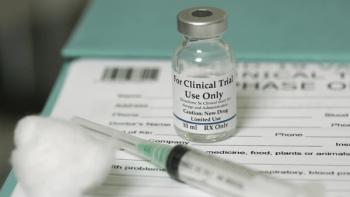
ASCRS 2023: Risk factors for glaucoma after infantile cataract surgery
In this recent study, Bharti Nihalani-Gangwani, MD, and Deborah VanderVeen, MD, reported that 29% developed glaucoma in a large infant cohort and the risk factors at the American Society of Cataract and Refractive Surgery annual meeting in San Diego.
The true incidence rate of the development of
In this recent study, Bharti Nihalani-Gangwani, MD, from the Department of Ophthalmology, Children’s Hospital, and Deborah VanderVeen, MD, from the Department of Ophthalmology, Harvard Medical School, Boston, reported that 29% developed glaucoma in a large infant cohort and the risk factors at the American Society of Cataract and Refractive Surgery annual meeting.
The investigators undertook a chart review of patients that spanned 30 years. The inclusion criterion included follow-up for at least 1 year. In this study,the definition of glaucoma was an intraocular pressure that exceeded 25 mmHg at 2 consecutive visits and changes in the optic nerve head.
Drs Nihalani-Gangwani and VanderVeen evaluated the patient age at the time of cataract surgery; the presence of a micro-cornea, defined as a corneal diameter below 9 mm); the cataract morphology, the time to the development of glaucoma after cataract surgery, and the type of treatment.
Chart review results
A total of 212 patients (319 eyes) were included in the analysis. The patient median age at the time of cataract surgery was 50 days (range, 11-325 days), and the median follow-up was 8.8 years (range, 1-26.3 years), the researchers reported.
They found that the incidence of glaucoma after surgery in this pediatric cohort was 29%.
In 82% of the eyes in which glaucoma developed postoperatively, the patient age at the time of surgery was younger than 3 months (p=0.001). Other relevant factors in the development of glaucoma included the presence of a micro-cornea (44%, p<0.0001), poor pupillary dilation (10%, p=0.004), persistent fetal vasculature (12%, p=0.8), and anterior-segment dysgenesis (3%, p=0.02), the authors reported.
They also found that in the 76% of patients in whom the glaucoma developed within a year after the cataract surgery, surgical intervention was required in contrast to the 13% in whom glaucoma developed more than 1 year after the cataract surgery (p=0.0002). In that latter group, medical treatment was effective for controlling the later-onset glaucoma in 87%.
The take-aways from this study were the 29% incidence of glaucoma after cataract surgery and the major risk factors that included the younger age at surgery and the presence of a micro-cornea and poor pupillary dilation.
The related findings were that patients with early-onset glaucoma were more than likely going to need surgery, but glaucoma that developed later responded to medical therapy in a high percentage of patients.
Newsletter
Want more insights like this? Subscribe to Optometry Times and get clinical pearls and practice tips delivered straight to your inbox.













































.png)


